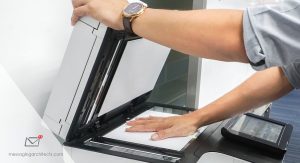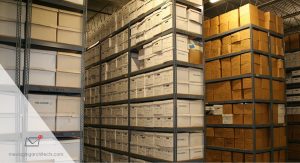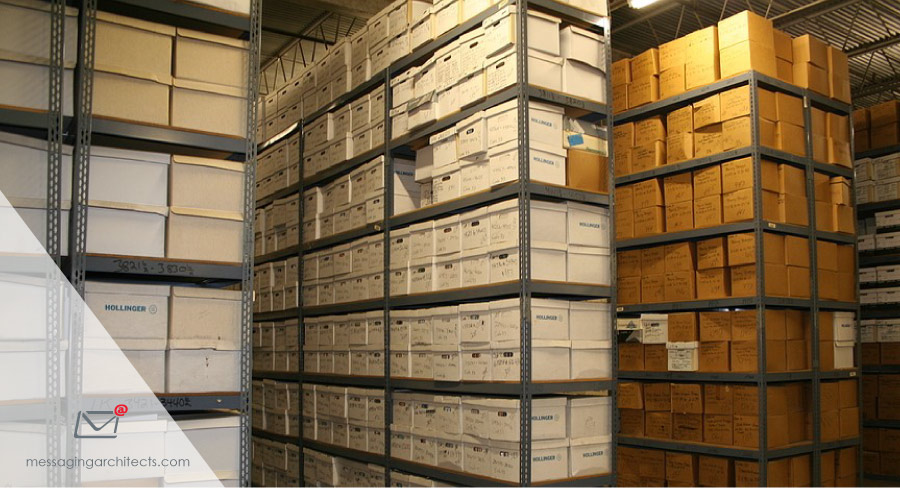In a previous post, we heard from an IG expert about Leveraging Remote Talent to Optimize IG. Today, we share her views on dealing with COVID-19 record retention issues. Her direct experience in this area includes managing document control teams in healthcare research and laboratory companies.
The Paper Records Problem
Regulated industries like healthcare must follow strict rules on how long to keep records and what constitutes a true copy. The FDA publishes guidance on record retention in the healthcare industry.
Despite modern digital options, many companies still choose to keep paper records. Most allow workers to scan them. But, just saying you scan all your files is not an adequate substitution for paper copies. Certifying that the scan to digital is the true copy requires extra steps.
To create a true representation of the original, you must create a protocol by which you verify these records. A lot of companies retain paper copies because they don’t want to do this extra work.
For example, I worked with a team that scanned important records then checked them page by page. They made sure there were no cutoffs or bad scans. And they did an electronic signature to say yes, this is a true and correct copy of X.
The COVID Access Problem
In COVID times, many people lack access to the volumes of records stored in file cabinets at the office. That’s a huge problem if you’re about to have an FDA inspection for a treatment the company is working on. All the papers remain at the office and corporate says that no one can access the building.
What are you going to do, keep the records at Bob’s house until the FDA comes?
Digital records provide the solution but developing the protocol becomes the first obstacle. People hold onto the familiar and resist change despite pressures to modernize.

The Scanning Problem
Scanning paper records in the current situation is problematic. You want access to the building for how long? You want to use the scanner while you’re in there? The consensus seems to be that if companies allow any access, they should also allow employees to scan for a reasonable time.
It’s a matter of getting permission, explaining your case, and how you’re going to go about it efficiently. This is about preparation. You need to plan to scan and follow a protocol prepared in advance. Going forward, you should never have to access those filing cabinets again.
The Shredding Problem
Paper records should never leave the building. Instead, define a protocol to create digital records. Make that happen efficiently in the building. Then shred the originals because the digital records replace the paper copies. Warning! Announcing that you intend to shred all the paper records freaks some people out.
However, you must shred them if you are saying the digital is the true and correct copy. If a director says, “We can’t shred all those records,” I point out the actual regulation from the governing body, e.g. you just need the true and correct copy.
A digital copy, created via the protocol with a process to verify, imparts the same status. Your protocol must also include a way to make corrections to the digital records. You can create digital records safely and efficiently, but it takes time and resources.
The Nudge to Digital Records
COVID has provided the nudge that people needed to step up into the 21st century and start creating digital records. Now, organizations are being forced to define and use their paper-to-digital records protocols, specifying how they will scan and certify digital copies, and who will certify them with provisions for electronic signatures.
Creating the protocol and hiring people to fill new roles can be challenging. Often organizations leverage existing roles to take on new digital record responsibilities. However, a dedicated filing person may not have the computer skills to be the new verifier. Work with HR to get the people and skills that you need.
Scanning all the paper records may create storage space and security issues for IT. If you have a locked filing cabinet and only certain people have access to it, what is the digital equivalent? Different rules apply depending on the industry and security risk. Figure out what makes sense for your industry and company and how secure it needs to be.

Anywhere in the World Access
The big issue with paper records goes like this, “Oh they’re on the 4th floor and I’m on the 1st, I have to go grab them.” On the other hand, digital records enable access from anywhere in the world. That means people will look at records more often. Instead of going from memory, they’ll quickly look it up, making the information more accurate and yielding better decisions.
Furthermore, the cost for digital storage usually totals less than for physical storage. For example, many organizations pay big money for record storage in off-site, underground storage vaults. They rent space filled with boxes and boxes of records no one will ever see, except the FDA who asks for the missing box.
Pays for Itself
Digital records are more efficient in the long run. Your next audit or inspection that requires access to records will be quick and painless, using digital searches instead of employees down in the file room digging for records.
Being forced to switch to digital records now because of COVID is a blessing in disguise because it pays for itself with the first inspection. And companies should have been doing it all along. It’s innovation through necessity, people forced to come up to speed with technology because of the current crisis.
COVID-19 Record Retention Experts
Records management professionals turn to Messaging Architects Data and Records Management and Data Compliance Monitoring experts to resolve COVID-19 record retention issues. They also guide organizations on IG policy and technology, including work from home technology.







